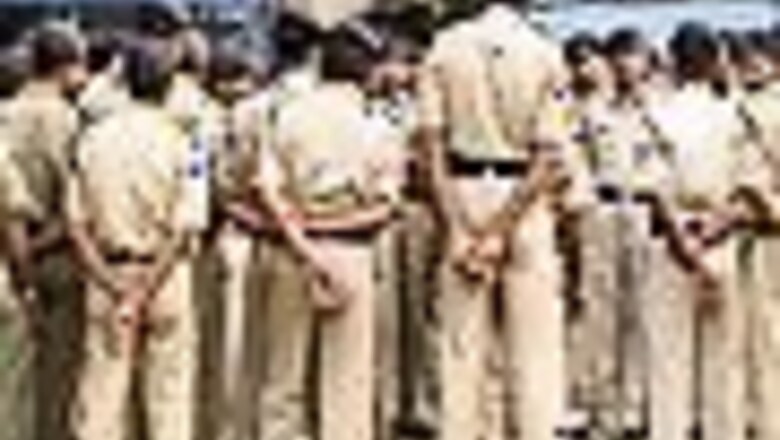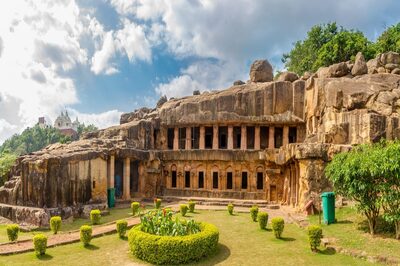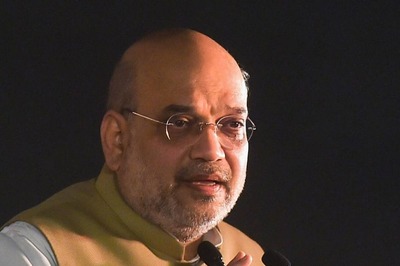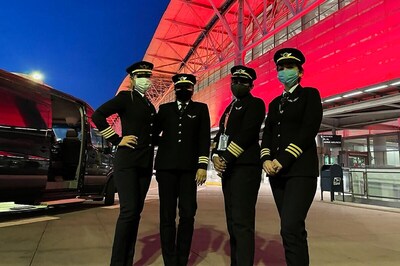
views
The Indian Police Service (IPS) was formed in the year of 1948. It is one of the three All India Services (the other two are Indian Forest Services and Indian Administrative Services). The cadre controlling authority for IPS is the Ministry of Home Affairs.
Cadre size: 3549 posts (direct recruitment – 70%, promotion 30%). The selected candidates' training ground is at Sardar Vallabhbhai Patel National Police Academy.
Functions of IPS Officers
Day-to-day duties, particularly in the areas of maintenance of public peace and order, crime prevention, investigation, and detection, collection of intelligence, VIP security, border policing, railway policing, smuggling, drug trafficking, economic offences, corruption in public life, disaster management, enforcement of socio-economic legislation, bio-diversity and protection of environmental laws etc.
Leading and commanding the civil and armed police forces in all the states and union territories.
Leading and commanding the Central Police Organizations like Intelligence Bureau, Central Bureau of Investigation, Border Security Force, Central Reserve Police Force, Indo-Tibetan Border Police, National Security Guard, Vigilance Organizations etc.
Serve at managerial/policy making levels in the Ministries and Departments of Central and State governments and public sector undertakings both at centre and states, and the RAW, Government of India.
Required to interact and coordinate closely with the members of other All India Services and Central Civil Services and also with the Armed Forces.
Lead/command the force with courage, uprightness, dedication and a strong sense of service to the people.
Endeavour to inculcate in the police forces under their command such values and norms as would help them serve the people better.
Inculcate integrity of the highest order, sensitivity to aspirations of people in a fast-changing social and economic milieu, respect for human rights, broad liberal perspective of law and justice, high standard of professionalism, physical fitness and mental alertness.
Modern ranks and rank badges for Indian Police Officers
State Emblem above one star above crossed sword and baton: Director, Intelligence Bureau
State Emblem above crossed sword and baton
- Director, Central Bureau of Investigation
- Director General, Central Reserve Police Force
- Director General, Border Security Force
- Director General, Central Industrial Security Force
- Director General, Sashastra Seema Bal
- Director General, National Security Guards
- Director General, Special Protection Group
- Director General, National Police Academy
- Director General, Security
- Director General States of Andhra Pradesh, Assam, Bihar, Gujarat, Jammu and Kashmir, Himachal Pradesh, Karnataka, Kerala, Maharashtra, Madhya Pradesh, Orissa, Punjab, Rajasthan, Tamil Nadu, Uttar Pradesh, and WestBengal
- Commissioner of Police, Mumbai and Delhi
One star above crossed sword and baton
- Inspector General of Police, Other States
- Joint Director, Intelligence Bureau
- Additional Director, Central Bureau of Investigation
- Joint Director, Central Bureau of Investigation
- Commandant, Central Forensic Institute
- Director, National Police Academy
- Inspector General, Border Security Force
- Inspector General, Central Industrial Security Force
- Inspector General, Central Reserve Police
- Inspector General, Indo-Tibetan Border Police
State Emblem above three stars in a triangle
- Inspector General of Police, Union Territories
- Other officer above selection grade
State Emblem above two stars
- Superintendent of Police in selection grade with 13+ years of service
State Emblem above one star
- Superintendent of Police in charge of a district
- Commandant of Battalion
- Other officer on senior time scale with between 9 and 13 years service
State Emblem
- Other officer on senior time scale with 9 years’ service or less
Three stars
- Assistant Superintendent in charge of sub-division
- Assistant Superintendent not in charge of sub-division with 4 years’ service or less
Two stars
- Assistant Superintendent not in charge of sub-division with between 2 and 4 years service and not incharge of a police sub division
One star
- Assistant Superintendent not in charge of sub-division with less than 2 years service
Ranks insignia of the State Police officers
Three stars
- Deputy Superintendent of Police. A state police officer who is directly recruited to this rank or has come up from the lower ranks.
Red and blue ribbon and three stars
- Inspector of Police.
Red and blue ribbon and two stars
- Sub-Inspector of Police
Red and blue ribbon and a star
- Assistant Sub-Inspector of Police
Three chevrons points facing downwards
- Police Head Constable
Two chevrons points facing downwards
- Senior Police Constable or Police Naik. His/her basic pay would be of the same scale of a head constable.
No rank insignia
- Constable




















Comments
0 comment